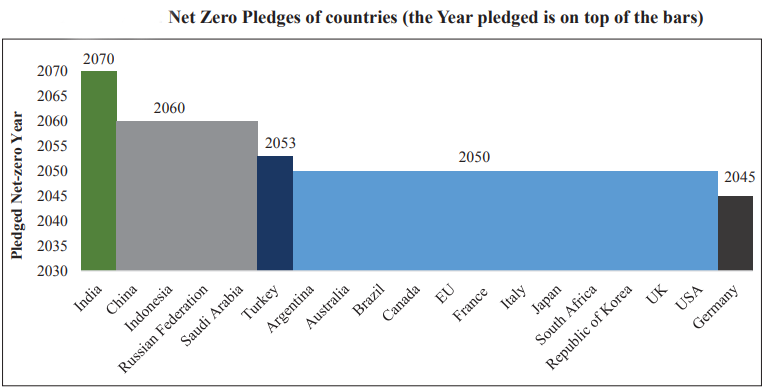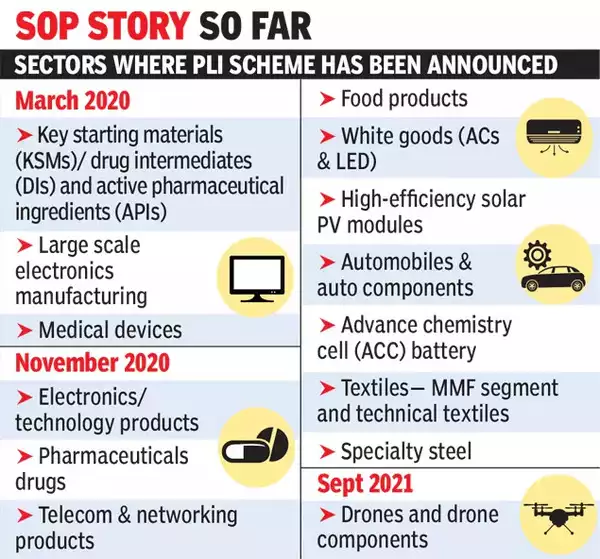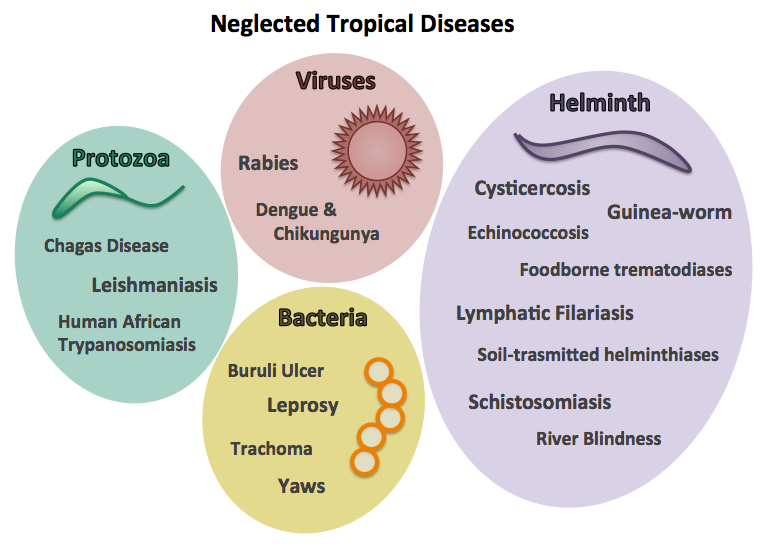Indian Economy
Economic Survey 2022-23
For Prelims: Key points of Economic Survey 2022-23
For Mains: Key points of Economic Survey 2022-23
Why in News?
The Union Finance Minister tabled the Economic Survey for the Financial Year 2022-23, after the President’s address.
- The Economic Survey 2022-23 highlighted that India’s economic recovery from the pandemic is complete and the economy is expected to grow in the range of 6% to 6.8% in the coming financial year 2023-24.
What is the Economic Survey?
- The Economic Survey of India is an annual document released by the Ministry of Finance. It is usually presented in Parliament a day before the Union Budget.
- It is prepared by the Economics Division of the Department of Economic Affairs (DEA) under the guidance of the Chief Economic Advisor.
- It reviews the developments in the Indian economy over the previous 12 months and presents the economic outlook for the current fiscal year.
- It also presents the current state of the Indian economy, including data on gross domestic product (GDP), inflation, employment, and trade.
- The first Economic Survey in India was presented in the year 1950-51.
- Up to 1964, it was presented along with the Union Budget. From 1964 onwards, it has been delinked from the Budget.
How was the State of Indian Economy in 2022-23?
- Performance:
- India hosted the world's second-largest vaccination drive, involving over 2 billion doses.
- The improvement in the financial health of public sector banks has enabled them to increase credit supply, leading to rapid credit growth for the micro, small, and medium enterprises (MSME) sector.
- Current Challenges:
- Indian economy still faces persistent challenges, including the depreciating rupee and the possibility of further US Fed interest rate hikes.
- The current account deficit (CAD) may also continue to widen as global commodity prices remain elevated.
- Outlook 2023-24:
- India's economic growth in FY23 is being led by private consumption and capital formation, generating employment.
- The recovery of MSMEs is progressing, with the Emergency Credit Linked Guarantee Scheme (ECGS) easing their debt concerns.
- Global growth is projected to decline in 2023, but India's growth is expected to be swift in FY24 with a vigorous credit disbursal and capital investment cycle.
- The expansion of public digital platforms and measures such as PM GatiShakti, the National Logistics Policy, and the Production-Linked Incentive schemes will support economic growth and boost manufacturing output.
- India's economic growth in FY23 is being led by private consumption and capital formation, generating employment.
What is India's Medium-term Growth Outlook?
- Context:
- The current decade is similar to 1998-2002, where transformative reforms had delayed growth returns due to temporary shocks, but structural reforms later paid growth dividends.
- 2014-2022 Period:
- 2014-2022 is an important period in India's economic history with reforms aimed at improving the ease of living and doing business.
- The reforms were based on creating public goods, trust-based governance, co-partnering with the private sector and increasing agricultural productivity.
- However, due to balance sheet stress and global shocks, key macroeconomic variables were negatively impacted during this period.
- 2014-2022 is an important period in India's economic history with reforms aimed at improving the ease of living and doing business.
- 2023-2030 Outlook:
- The growth outlook is better than pre-pandemic years and the Indian economy is prepared to grow at its potential in the medium term.
What were the Major Fiscal Developments Related to Revenue?
- Context:
- During the fiscal year 2023, the Union Government's finances showed resilience, which was a result of various factors like the increase in direct taxes and Goods and Services Tax (GST) revenues.
- Revenue Growth and Performance:
- From April to November 2022, the Gross Tax Revenue experienced a YoY growth of 15.5%, which was primarily driven by the strong growth of both direct taxes and GST.
- GST has established itself as a vital source of revenue for the central and state governments, as seen from the YoY growth of 24.8% from April to December 2022.
- Over the years, the Centre's Capex has steadily increased from 1.7% of GDP (FY09 to FY20) to 2.5% of GDP in FY22.
- To prioritise spending on Capex, the Centre incentivized the state governments through interest-free loans and increased borrowing limits.
- The increased Capex, particularly in infrastructure-intensive sectors such as roads and highways, railways, housing, and urban affairs, has substantial positive effects on medium-term growth.
- Towards Sustainable Debt-to-GDP ratio:
- The government's strategy of focusing on Capex-led growth will keep the growth-interest rate differential positive, resulting in a sustainable debt-to-GDP ratio in the medium run.
What was the Status of Monetary Management and Financial Intermediation?
- Context:
- The Reserve Bank of India (RBI) started its monetary tightening cycle in April 2022, and since then, they have raised the repo rate by 225 basis points.
- This has led to a decrease in surplus liquidity and improved the balance sheets of financial institutions, making it easier for them to lend money.
- It is expected that the growth in credit offtake will continue and be sustained by an increase in private capital expenditure, which will start a virtuous cycle of investment.
- The Reserve Bank of India (RBI) started its monetary tightening cycle in April 2022, and since then, they have raised the repo rate by 225 basis points.
- Performance and Growth:
- The Gross Non-Performing Assets (GNPA) ratio of SCBs (scheduled commercial banks) has dropped to a seven-year low of 5.0, and the Capital-to-Risk Weighted Assets Ratio (CRAR) remains healthy at 16.0.
- In FY22, the recovery rate through the Insolvency and Bankruptcy (IBC) channel was the highest compared to other channels, which shows a positive trend for the SCBs.
How Prices and Inflation was Regulated in 2022-23?
- Context:
- In 2022, India experienced three phases of consumer price inflation. During the first phase, from January to April, inflation peaked at 7.8% due to the war between Russia and Ukraine and crop shortages caused by heat waves in some parts of the country.
- However, prompt actions by the government and the Reserve Bank of India helped bring inflation under control, with a decline to 5.7% by December.
- In 2022, India experienced three phases of consumer price inflation. During the first phase, from January to April, inflation peaked at 7.8% due to the war between Russia and Ukraine and crop shortages caused by heat waves in some parts of the country.
- Bottlenecks:
- The gap between the wholesale price index and the consumer price index remained wide, with core inflation still showing resistance to change.
- Regulatory Measures:
- The government adopted a multi-pronged approach to control the increase in prices, which included: reducing the export duty of petrol and diesel, bringing the import duty on major inputs to zero, imposing export ban on wheat products and export duty on rice, and reducing the basic duty on crude and refined palm oil.
- The government's timely policy intervention in the housing sector, along with low home loan interest rates, boosted demand in the affordable housing segment and attracted more buyers in FY23.
- RBI’s Forecast:
- The RBI forecasts higher domestic prices for cereals, spices, and milk in the near future, mainly due to supply shortages and rising feed costs.
- The changing climate around the world is also increasing the risks of higher food prices.
- The RBI forecasts higher domestic prices for cereals, spices, and milk in the near future, mainly due to supply shortages and rising feed costs.
What is the Status of Social Infrastructure and Employment in India during 2022-23?
- Context:
- The government increased its spending on the social sector. The twin pillars of education and health are being strengthened to form human capital.
- Overall, the government's social sector spending increased from Rs. 9.1 lakh crore in FY16 to Rs. 21.3 lakh crore in FY23.
- The government increased its spending on the social sector. The twin pillars of education and health are being strengthened to form human capital.
- Social Infrastructure:
- Education:
- The National Education Policy 2020 is expected to enrich the nation's growth and development prospects.
- The government's efforts have led to improvements in enrollment ratios and gender parity in schools.
- Healthcare:
- In FY23, the government's budgeted spending on the health sector was 2.1% of GDP, up from 1.6% in FY21.
- As of January 4, 2023, nearly 22 crore people have benefited from the Ayushman Bharat Scheme, and over 1.54 lakh health and wellness centres have been established across the country.
- Poverty Alleviation:
- The progress in attaining the Sustainable Development Goal of halving poverty by 2030 is demonstrated by the fact that more than 41 crore people have exited poverty between 2005-06 and 2019-21 according to the UN Multidimensional Poverty Index.
- Aadhaar and Co-Win:
- Aadhar played a critical role in developing the Co-WIN platform and administering over 2 billion vaccine doses.
- Aspirational Districts Programme:
- The Aspirational Districts Programme is seen as a model of good governance, especially in remote areas.
- Education:
- Employment:
- Labour Force Participation: Labour markets have recovered from the effects of Covid-19, with unemployment rates falling from 5.8% in 2018-19 to 4.2% in 2020-21.
- The Rural Female Labor Force Participation Rate has risen from 19.7% in 2018-19 to 27.7% in 2020-21, which is a positive development.
- eShram Portal: The eShram portal was created to create a national database of unorganised workers, and as of December 31, 2022, over 28.5 crore workers were registered.
- Jam Trinity and DBT: The JAM trinity, combined with Direct Benefit Transfer (DBT), has brought marginalised people into the formal financial system, empowering them.
- Labour Force Participation: Labour markets have recovered from the effects of Covid-19, with unemployment rates falling from 5.8% in 2018-19 to 4.2% in 2020-21.
How was India’s Economic Performance in Climate Change and Environment?
- Context:
- The Economic Survey 2022-23 presented a chapter on 'Climate Change and Environment’ listing out India's nationally determined contributions (NDCs) that include the transition to renewable energy resources, commitment to achieve "Net Zero" emissions by 2070 and steps taken to become energy independent.
- Performance and Goals:
- India has also committed to reduce emissions intensity of its GDP by 45% by 2030 from 2005 levels.
- Another target has been set to achieve about 50% cumulative electric power installed capacity from non-fossil fuel-based energy resources by 2030.
- India has already achieved its target of 40% installed electric capacity from non-fossil fuels ahead of 2030 and the likely installed capacity from non-fossil fuels will be more than 500 GW by 2030.
- This would lead to a decline of average emission rate by around 29% by 2029-30 (compared to 2014-15).
- A mass movement LiFE– Lifestyle for Environment was launched at the Glasgow climate summit at UNFCCC COP26.
- In Nov 2022, India’s first Sovereign Green Bonds (SGrBs) Framework was issued. RBI auctioned two tranches of ₹4,000 crore SGrBs.
- The survey also highlighted India's plans to be energy independent by 2047, by relying on green hydrogen through the National Green Hydrogen Mission.
- The survey shows that India is becoming a favoured destination for renewables with investments standing at USD 78.1 billion in the past 7 years.
- Solar power capacity installed, a key metric under the National Solar Mission, stood at 61.6 GW as of October 2022.
How was India’s Economic Performance in Agriculture and Food Management?
- Context:
- India’s agriculture sector has witnessed a robust average annual growth rate of 4.6% over the last six years. This enabled agriculture to contribute significantly towards the country's overall growth, development and food security.
- Performance:
- In recent years, India has emerged as the net exporter of agricultural products, with exports in 2021-22 touching a record USD 50.2 billion.
- Agri sector saw buoyant growth due to the following measures taken by the govt:
- Augmentation of crop and livestock productivity
- MSP for all mandated crops fixed at 1.5 times of all India weighted average cost of production
- Promotion of crop diversification
- Mechanisation and boost to horticulture and organic farming.
- Private investment in agriculture increased to 9.3% in 2020-21. Institutional credit to the Agri sector continued to grow to Rs. 18.6 lakh crore in 2021-22.
- Foodgrains production in India saw sustained increase and stood at 315.7 million tonnes in 2021-22.
- As per the First Advance Estimates for 2022-23 (Kharif only), total foodgrains production in the country is estimated at 149.9 million tonnes which is higher than the average Kharif foodgrain production of the previous five years (2016-17 to 2020-21).
- Also, the GoI has recently decided to provide free foodgrains to beneficiaries under the NFSA 2013 for one year from 1 January 2023.
- The National Agriculture Market (e-NAM) Scheme has established an online, competitive, transparent bidding system to ensure farmers get remunerative prices for their produce (covering 1.74 crore farmers and 2.39 lakh traders).
- Under Paramparagat Krishi Vikas Yojana (PKVY), organic farming is being promoted through Farmer Producer Organisations (FPO).
- India stands at the forefront to promote millets after the UNGA, in its 75th session in 2021, declared 2023 the International Year of Millets (IYM).
How was India’s Economic Performance in the Industrial Sector?
- Context:
- The Economic Survey 2022-23 showed a rise of 3.7% of overall Gross Value Added (GVA) by the Industrial Sector (for the first half of FY 22-23) which is higher than the average growth of 2.8% achieved in the first half of the last decade.
- Performance:
- Robust growth in Private Final Consumption Expenditure, export stimulus during the first half of the year, increase in investment demand triggered by enhanced public capex and strengthened bank and corporate balance sheets have provided a demand stimulus to industrial growth.
- The supply response of the industry to the demand stimulus has been robust.
- Both the Purchasing Managers Index (PMI) and Index of Industrial Production (IIP) are in an upward growth trajectory since July 2021.
- Robust growth in Private Final Consumption Expenditure, export stimulus during the first half of the year, increase in investment demand triggered by enhanced public capex and strengthened bank and corporate balance sheets have provided a demand stimulus to industrial growth.
- Credit to both MSMEs and large industries have shown double digit growth (MSMEs by 30% since Jan 2022).
- India’s electronics exports have risen nearly threefold, from US $4.4 billion in FY19 to US $11.6 Billion in FY22 with India becoming the second-largest mobile phone manufacturer globally.
- Foreign Direct Investment (FDI) flows into the Pharma Industry have risen four times, from US $180 million in FY19 to US $699 million in FY22.
- Production Linked Incentive (PLI) schemes were also introduced across 14 categories, with an estimated capex of Rs. 4 lakh crore over the next five years, to plug India into global supply chains.
- Over 39,000 compliances have been reduced and more than 3500 provisions decriminalised as of January 2023 by amending the Companies Act 2013.
- To further enhance India’s integration in the global value chain, ‘Make in India 2.0’ is now focusing on 27 sectors, which include 15 manufacturing sectors and 12 service sectors.
How was India’s Economic Performance in the Services Sector?
- Context:
- The Services Sector in India is expected to grow at 9.1% in FY23, compared to 8.4% (YoY) in FY22.
- Performance:
- Robust expansion in PMI (Purchasing Managers' Index) services has been observed since July 2022.
- India was among the top ten services exporting countries in 2021, with a share of 4% in world commercial services exports.
- India’s services sector has been resilient even throughout the Covid-19 pandemic and amid geopolitical uncertainties due to higher demand for digital support, cloud services, and infrastructure modernization.
- In the real-estate sector, there was sustained growth, leading to pre-pandemic housing sales levels, with a 50% rise between 2021 and 2022.
- In the tourism sector, hotel occupancy rate improved from 30-32% in April 2021 to 68-70% in November 2022 showing signs of revival with increasing foreign tourist arrivals in FY23.
- Digital platforms are transforming India’s financial services; India’s e-commerce market is projected to grow at 18% annually through 2025.
How was India’s Economic Performance in the External Sector?
- Context:
- Owing to the recent geopolitical developments, India's external sector has been facing considerable global headwinds.
- However, India has diversified its markets and increased its exports to Brazil, South Africa and Saudi Arabia.
- Performance:
- India's current account balance (CAB) recorded a deficit of US$ 36.4 billion (4.4% of GDP) in the second quarter (Q2) of FY23 in contrast to a deficit of US$ 9.7 billion (1.3% of GDP) in Q2 of FY22.
- This was mainly due to a higher merchandise trade deficit of US$ 83.5 billion and an increase in net investment income outgo.
- To increase its market size and ensure better penetration, in 2022, India signed CEPA with UAE and ECTA with Australia.
- India is the largest recipient of remittances in the world receiving US$ 100 bn in 2022.
- Remittances are the second largest source of external financing after service export.
- As of December 2022, India’s Forex Reserves stood at US$ 563 bn covering 9.3 months of imports (this is a decline from 13 months of imports in FY 21-22).
- Despite this, India was the 6th largest foreign exchange reserves holder in the world.
- India's current account balance (CAB) recorded a deficit of US$ 36.4 billion (4.4% of GDP) in the second quarter (Q2) of FY23 in contrast to a deficit of US$ 9.7 billion (1.3% of GDP) in Q2 of FY22.
How was India’s Economic Performance in the Digital Public Infrastructure?
- Context:
- India's Digital Public Infrastructure (DPI) can add around 60-100 basis points (BPS) to India's potential GDP growth rate.
- In the immediate future, platforms such as Open Network for Digital Commerce (ONDC), Open Credit Enablement Network (OCEN) will open avenues for e-commerce market access and credit availability for smaller businesses and strengthen the expected economic growth.
- Performance:
- Unified Payment Interface (UPI):
- UPI-based transactions grew in both value (121%) and volume (115%), between 2019-22, paving the way for its international adoption.
- Telephone and Radio - For Digital Empowerment:
- Total telephone subscriber base in India stands at 117.8 crore (as of Sept,22), with 44.3% of subscribers in rural India.
- More than 98% of the total telephone subscribers are connected wirelessly.
- As of March 2022, India’s overall teledensity (number of telephone connections per 100 people) in India stood at 84.8%.
- Total telephone subscriber base in India stands at 117.8 crore (as of Sept,22), with 44.3% of subscribers in rural India.
- Unified Payment Interface (UPI):
- Economic Survey states that a landmark achievement in telecommunications in India was the launch of 5G services.
- The Indian Telegraph Right of Way (Amendment) Rules, 2022, will facilitate faster and easier deployment of telegraph infrastructure to enable speedy 5G rollout.
- Prasar Bharati, India’s autonomous public service broadcaster, broadcasts in 23 languages, 179 dialects from 479 stations and reaches 92% of India’s total area and 99.1% of the total population.
- Digital Public Goods:
- Schemes like MyScheme, TrEDS, GEM, e-NAM, UMANG have transformed India’s market place and has enabled citizens to access services across sectors.
- Open Credit Enablement Network aims towards democratising lending operations while allowing end-to-end digital loan applications.
- National AI portal has published 1520 articles, 262 videos, and 120 government initiatives and ‘Bhashini’ is being viewed as a tool for overcoming the language barrier.
- The bouquet of digital public infrastructure products like e-RUPI, e-Way Bill etc. have ensured real value for money to consumers while reducing the compliance burden for producers.


Indian Economy
PLI and India’s Growth Ecosystem
For Prelims: Production Linked Incentive scheme (PLI), Manufacturing Sector, Ease of doing business, 5G, Green technologies, Carbon footprint, Free trade agreements, One-district-one-product, SFURTI.
For Mains: Incentives Under the Production Linked Incentive scheme, PLI Contribution to India’s Growth Trajectory.
Why in News?
As the world adjusts to a new economic reality in the wake of the Covid-19 pandemic, India has recognized a strategic opportunity to establish itself as a key player in the global value chains.
- The manufacturing industry’s positive response to the Production Linked Incentive scheme (PLI) is likely to upgrade the labor force’s skills, replace old machinery, enhance production volumes and make logistics and operations efficient, giving India a chance to become a key manufacturing player.
What is the Production Linked Incentive scheme (PLI)?
- About:
- The Indian government's introduction of the PLI scheme in 14 key manufacturing sectors is a significant step towards achieving its strategic vision for the manufacturing industry.
- With a budget of ₹1.97 lakh crore, the scheme is well-designed to encourage growth and sustainability in the targeted industry through various incentives and support measures.
- Launched in March 2020, the scheme initially targeted three industries:
- Mobile and allied Component Manufacturing
- Electrical Component Manufacturing and
- Medical Devices
- The Indian government's introduction of the PLI scheme in 14 key manufacturing sectors is a significant step towards achieving its strategic vision for the manufacturing industry.
- Targeted Sectors:
- The 14 sectors are mobile manufacturing, manufacturing of medical devices, automobiles and auto components, pharmaceuticals, drugs, specialty steel, telecom & networking products, electronic products, white goods (ACs and LEDs), food products, textile products, solar PV modules, advanced chemistry cell (ACC) battery, and drones and drone components.
- Incentives Under the Scheme:
- The incentives given, are calculated on the basis of incremental sales.
- In some sectors such as advanced chemistry cell batteries, textile products and the drone industry, the incentive to be given will be calculated on the basis of sales, performance and local value addition done over the period of five years.
- The emphasis on R&D investment will also help the industry keep up with global trends and remain competitive in the international market.
- The incentives given, are calculated on the basis of incremental sales.
How PLI is Creating a Growth Ecosystem in India?
- Reducing Dependency on Imports: This shift in the manufacturing landscape could have significant implications for global trade, reducing dependency on a single-source country and diversifying the sources of production.
- Meeting the Demand: Increased production volumes are meeting consumer demand, particularly in the telecom and networking sectors with faster adoption of 4G and 5G products.
- The PLI scheme for large-scale electronics manufacturing (LSEM) saw successful results, with 97% of mobile phones sold in India now being made in India. As of September, 2022, the PLI scheme for LSEM attracted investments of ₹4,784 crore and generated 41,000 additional jobs.
- Reducing Carbon Footprint: The PLI scheme's emphasis on green technologies will reduce the carbon footprint and position India as a pioneer in green policy implementation.
- Boosting Free Trade Agreements: Improved productivity is boosting free trade agreements for better market access and increased sales are driving demand for better logistical connectivity.
- Frontlining Rural India: The government of India is working closely with states to help industries and artisans in rural areas become part of the country's growth story.
- This is being done through initiatives such as "one-district-one-product" to support local businesses, and "SFURTI" to improve traditional industries.

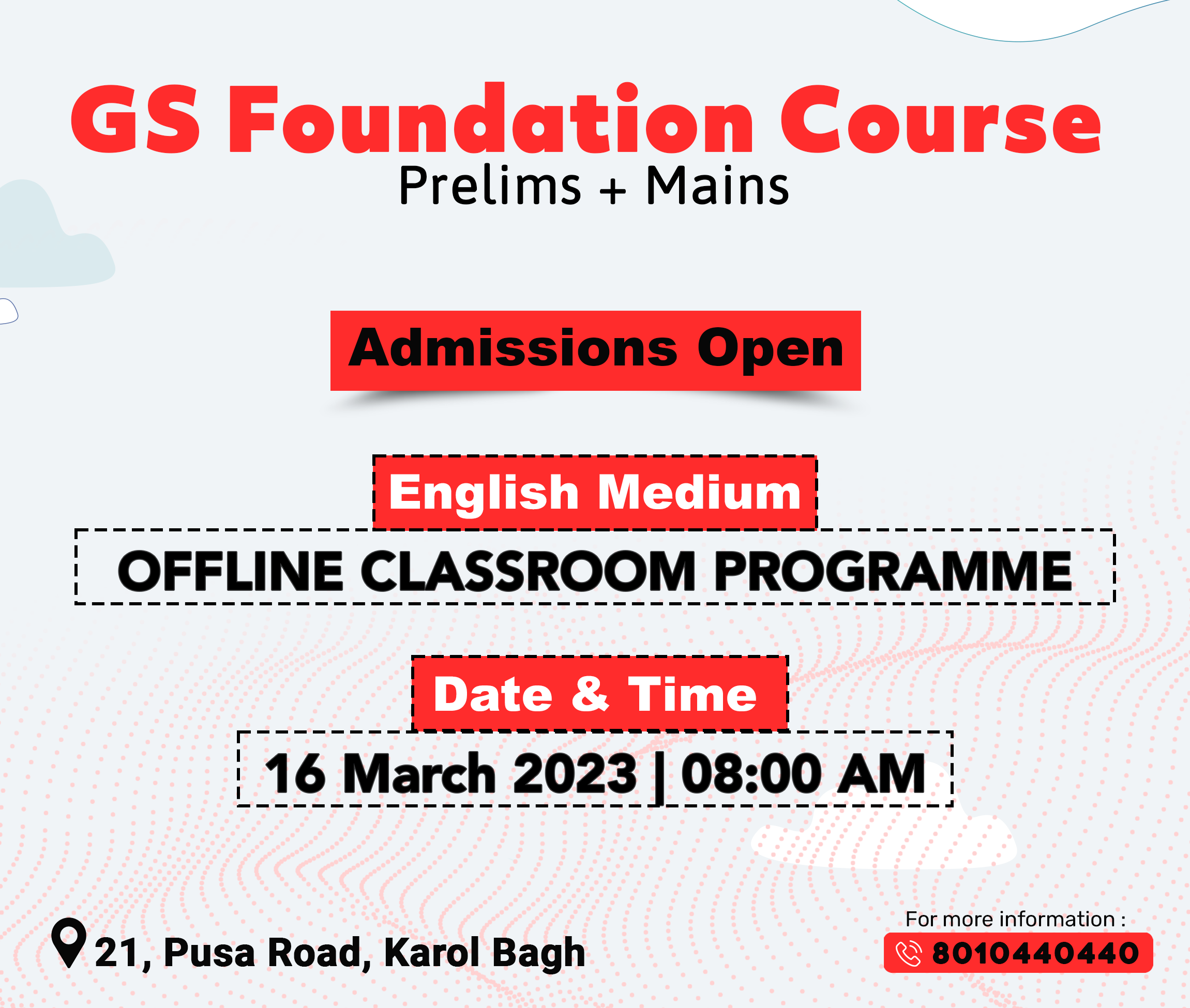
Social Justice
Global Report on Neglected Tropical Diseases
Prelims: About NTDs, World Health Organisation.
Mains: Indian efforts in combating Neglected Tropical Diseases.
Why in News?
Recently, the World Health Organization’s (WHO) has released a Global report on Neglected Tropical Diseases (NTD) 2023, which states that NTD continues to disproportionately impact the most impoverished members of the international community.
- World NTD day is observed every year on 30th January. It was declared in the 74th World Health Assembly (2021).
What are Neglected Tropical Diseases (NTDs)?
- About:
- NTDs are a group of infections that are most common among marginalized communities in the developing regions of Africa, Asia and the Americas.
- They are caused by a variety of pathogens such as viruses, bacteria, protozoa and parasitic worms.
- NTDs are especially common in tropical areas where people do not have access to clean water or safe ways to dispose of human waste.
- These diseases generally receive less funding for research and treatment than malaises like tuberculosis, HIV-AIDS and malaria.
- Examples of NTDs are: snakebite envenomation, scabies, yaws, trachoma, Leishmaniasis and Chagas disease etc.
What are the Highlights of the Report?
- Overview:
- About 16 countries accounted for 80 % of the global NTD burden.
- Globally, nearly 1.65 billion people are estimated to require treatment for at least one NTD.
- Covid-19 impacted the community-based initiatives, access to healthcare facilities and healthcare goods supply chains. As a result, between 2019 and 2020, 34% fewer persons received treatment for NTDs.
- Recommendations:
- Greater efforts and investments are required to reverse delays and accelerate progress towards the NTD road map targets by 2030.
- WHO urged multi-sectoral collaboration and partnerships to achieve these targets.
- It is the need of the hour for additional partners and funders to step up and close the gaps preventing the full-scale implementation of NTD actions at the international and local levels.
What are the Global Initiatives?
- WHO’s New Roadmap for 2021–2030:
- The NTD road map 2021–2030 is WHO’s blueprint to drive global efforts in the fight against NTDs in the context of the United Nations Sustainable Development Goals.
- The Blueprint recommends following measures,
- From measuring process to measuring impact.
- From disease-specific planning and programming to collaborative work across sectors.
- From externally driven agendas reliant to programmes that are country-owned and country-financed.
- London Declaration on NTDs: It was adopted on 30th January, 2012 to recognise the global burden of NTDs.
What are the Indian Initiatives to Eliminate NTDs?
- The Accelerated Plan for Elimination of Lymphatic Filariasis (APELF) was launched in 2018, as part of intensifying efforts towards the elimination of NTDs.
- A WHO-supported regional alliance established by the governments of India, Bangladesh, and Nepal in 2005 to expedite early diagnosis and treatment of the most vulnerable populations and improve disease surveillance and control of sandfly populations (Kala-azar).
- India has already eliminated several other NTDs, including guinea worm, trachoma, and yaws.
- Preventive methods like Mass Drug Administration (MDA) rounds are periodically deployed in endemic areas during which anti-filarial medicines are provided free-of-cost to at-risk communities.
- Vector-control measures like Indoor Residual Spraying rounds are undertaken in endemic areas to prevent sandfly breeding.
- The government also supports morbidity management and disability prevention for those affected by lymphoedema and hydrocele.
- State and central governments have also introduced wage compensation schemes for those suffering from Kala-Azar and its sequela (a condition which is the consequence of a previous disease or injury) known as Post-Kala Azar Dermal Leishmaniasis.

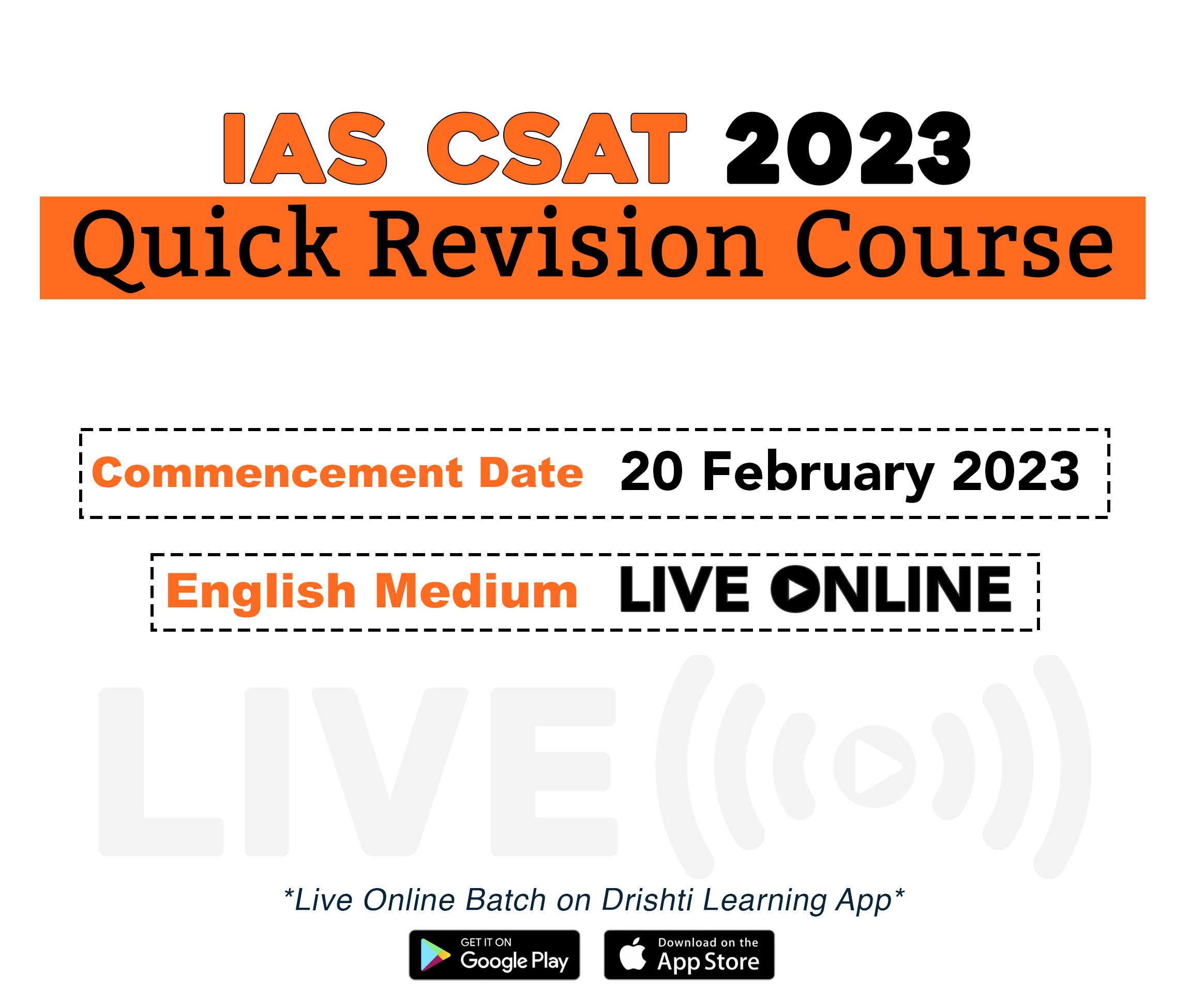
International Relations
UNSC Reforms
Prelims: UNSC, Membership of UNSC, Peacekeeping missions of UN, Universal Declaration of Human Rights (UDHR).
Mains: Issues Associated to the Functioning of UNSC.
Why in News?
Recently, the UN General Assembly president has said the UN Security Council (UNSC) has become “paralysed” and “dysfunctional” in its “present form”, as it has not been able to take any decision since the Russia-Ukraine war started.
What are the Hurdles in Reforming UN?
- The General Assembly has always been very much divided. Among the 193 countries, there are five negotiating groups and they are neutralising each other.
- The functioning of the General Assembly is as much important as the permanent members of the UNSC in ensuring reform of the United Nations system.
- The permanent members were “historically not enthusiastic” about reform of the UN system but they have all agreed that it is necessary for introducing changes in the Security Council.
What is the United Nations Security Council?
- The UNSC was established by the UN Charter in 1945.
- It is one of the 6 principal organs of the United Nations.
- UNSC has 15 members: 5 permanent members (P5) and 10 non-permanent members elected for 2-year terms.
- The 5 permanent members are: United States, Russian Federation, France, China and the United Kingdom.
- India has served seven times in the UNSC as a non-permanent member and in January 2021, India entered the UNSC for the eighth time.
What are the Issues with Regard to UNSC?
- Lack of Adequate Representation:
- The UN Security Council is less effective because it is less representative, the most pertinent absence being that of Africa, a continent of 54 countries.
- Current global issues are complex, and interconnected. Lack of representation of geopolitical and geo-economically important countries is leaving out a large segment of global opinion to have a voice in the highest security summit.
- Furthermore, It is a matter of concern that globally important countries such as India, Germany, Brazil, and South Africa are not represented on the UNSC permanent members list.
- Misuse of Veto Power:
- Veto power has been always criticized by many experts as well as by most States calling it a” self-chosen club of the privileged” and non-democratic and not allowing the Council to make necessary decisions whenever it displeases any one of the P-5.
- It is also not appropriate for the current global security environment to be guided by elite decision-making structures.
- Geopolitical Rivalry within P5:
- The geopolitical rivalry among the permanent members has prevented the UNSC from coming up with effective mechanisms to deal with global issues.
- Taking the current world order as an example, the P5 members: United States, Russia, and China are three poles on the periphery of the globe having several geopolitical issues revolving around them (Taiwan Issue and Russia-Ukraine War).
- Threat to State’s Sovereignty:
- As the principal organ of international peacekeeping and conflict resolution, the UNSC is responsible for keeping peace and managing conflict. Its decisions (referred to as resolutions) are binding on all member countries, unlike the General Assembly's.
- This means that any state's sovereignty can be encroached upon if necessary by taking action, such as imposing sanctions.
What can be the Solution?
- Democratization of UNSC:
- The power imbalance between the P5 and other countries in the UNSC needs to be addressed urgently to make the council more democratic and increase its legitimacy in governing international peace, security and order.
- Expansion of UNSC:
- The changing needs of global governance for peace and security require significant reforms in the UNSC, including expanding its permanent and non-permanent seats to better address the complex and evolving challenges to international peace and security.
- Equitable Representation:
- Equitable representation of all the regions in the UNSC is critical to decentralizing its governing power and authority over nations.
- The decentralization of the UNSC’s decision-making processes will enable its transformation to a more representative, participatory body.
- India’s Role:
- India as the current one of the non-permanent members of the UNSC can start by drafting a resolution containing a comprehensive set of proposals for reforming the UNSC.
- In September 2022, India made a push for UNSC reform hosting a meeting of two separate groupings – G-4 and L-69 – in New York on the sidelines of the UN General Assembly.
- As India leads Global South, it needs to revitalise its engagement with its traditional partners in the “global south” by articulating their peace and security concerns in the UNSC.
UPSC Civil Services Examination Previous Year Question (PYQ)
Prelims
Q. The Security Council of UN consists of 5 permanent members, and the remaining 10 members are elected by the General Assembly for a term of (2009)
(a) 1 year
(b) 2 years
(c) 3 years
(d) 5 years
Ans: (b)
Mains
Q. Discuss the impediments India is facing in its pursuit of a permanent seat in UN Security Council. (2015)

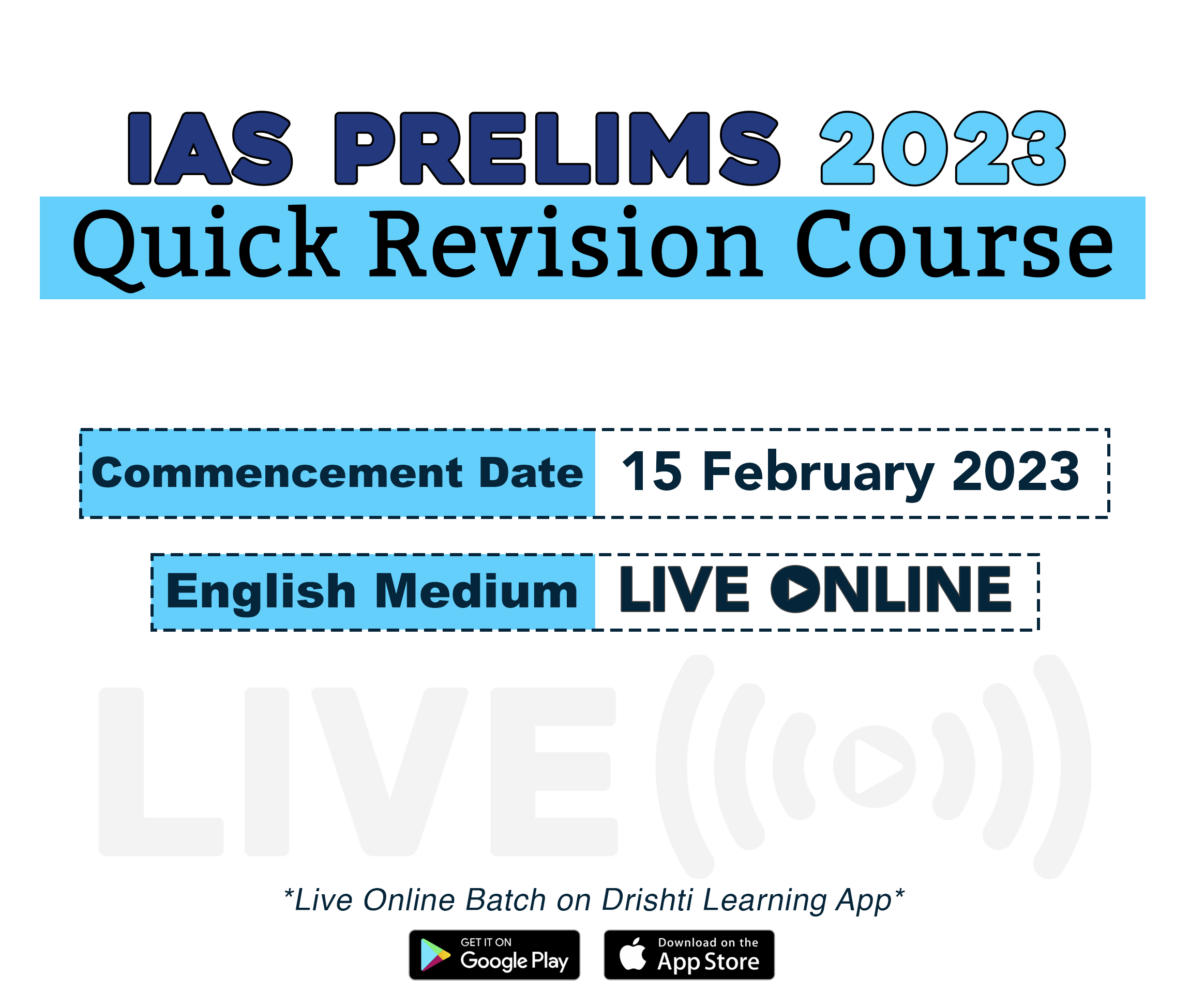
Important Facts For Prelims
Critical and Emerging Technologies Dialogue
Why in News?
India’s National Security Advisor hold talks with the US counterpart on the first dialogue on Initiative for Critical and Emerging Technologies (iCET) in the US.
- Completing the work on the long-awaited NASA-ISRO Synthetic Aperture Radar (NISAR) earth observation satellite is an excellent example of how the US-India partnership in space can benefit the world.
What is the iCET Initiative?
- About:
- The iCET initiative was launched by India and the US in May 2022, and is being run by the National Security Councils of both countries.
- Under iCET, the both countries have identified six areas of cooperation which would include co-development and co-production, that would gradually be expanded to QUAD, then to NATO, followed by Europe and the rest of the world.
- Under iCET, India is ready to share its core technologies with the US and expects Washington to do the same.
- Six Areas of Cooperation:
- The six areas for cooperation are scientific research and development; quantum and artificial intelligence, defense innovation, space, advanced telecom which would include things like 6G and semiconductors.
- Significance:
- iCET would forge closer linkages between government, academia and industry of the two countries.
- The objective is to provide cutting edge technologies to the rest of the world which are affordable.
- The launch of the ambitious iCET dialogue is seen as “an alignment of strategic, commercial and scientific approaches” in the field of technology.
- This is eventually likely to be mirrored in the progress made in Quad – the informal grouping of four countries, Australia, Japan, India and the United States.
Who is a National Security Advisor (NSA) in India?
- The NSA is the primary advisor to the Prime Minister of India. He also presides over the National Security Council (NSC).
- The current NSA is Ajit Doval.
- The NSC of India is a three-tiered organisation that oversees political, economic, energy and security issues of strategic concern.
- It was formed in 1998, where all aspects of national security are deliberated upon.
- NSC operates within the executive office of the PM, liaising between the government’s executive branch and the intelligence services.


Rapid Fire
Rapid Fire Current Affairs
Ukraine’s Odesa in UNESCO's World Heritage List
Recently, the World Heritage Committee decided to add the historic centre of Ukraine’s Black Sea port city of Odesa to its list of World Heritage sites. This decision recognizes the extraordinary universal value of the site and the duty of all humanity to protect it. The Historic Centre of Odesa has also been inscribed on the List of World Heritage in Danger.
The List of World Heritage in Danger is designed to inform the international community of conditions that threaten the very characteristics for which a property was inscribed on the World Heritage List and to encourage corrective action.
As of 2023, the 52 properties are decided by the Committee to include on the List of World Heritage in danger.
Read More: UNESCO’s World Heritage Sites, Black Sea
47th Raising Day of ICG
On the occasion of its 47th raising day celebration, Indian Coast Guard (ICG) announced its decision to install a new radar in the Sunderbans area for better patrolling and surveillance of the area while taking guard against any terror activities from across the border.
As the fourth largest Coast Guard in the world, it has played a significant role in securing the Indian coasts and enforcing regulations in the maritime zones of India.
In 1978 (establishment year), there were just seven surface platforms, now, ICG has grown into a formidable force with 158 ships and 78 aircraft in its inventory and is likely to achieve targeted force levels of 200 surface platforms and 80 aircraft by 2025.
In keeping with the nation’s vision of ‘SAGAR’ and ‘Neighbourhood First’ policy the ICG has trained several foreign officers and personnel below officer ranks in 2022.
Read More: Indian Coast Guard (ICG), Mission Sagar, Neighbourhood First Policy
Visakhapatnam: Andhra Pradesh’s Capital
Recently, the Chief Minister of Andhra Pradesh announced that Visakhapatnam would be the state’s new capital. The state needs a new capital since Hyderabad, the capital of undivided Andhra Pradesh, is now with Telangana, and the two states have been sharing the capital temporarily.
In 2020, the Andhra Pradesh Legislative Assembly passed the Andhra Pradesh Decentralisation and Inclusive Development of All Regions Bill. The Bill intends to give shape to the state government's plan of having three capitals — the executive capital in Visakhapatnam, the legislative in Amaravati and the judicial in Kurnool.
In 2022, the Andhra Pradesh High Court directed the State government to construct and develop Amaravati, the capital city of the State.
However, the issue awaits a final decision from the Supreme Court due to the petitions filed by the farmers who had given land to develop Amaravati.
Read More: Andhra Pradesh Decentralisation and Inclusive Development of All Regions Bill, State government's plan of having three capitals, Three Capital Issue of Andhra Pradesh
Armenia-Azerbaijan Conflict
Armenia appealed to the International Court of Justice (ICJ) to order Azerbaijan to dissolve the road blockade isolating Nagorno-Karabakh. Nagorno-Karabakh is within Azerbaijan but had been under the control of ethnic Armenian forces since 1994 when a separatist war ended.
The conflict can be traced back to the pre-Soviet era when the region was at the meeting point of Ottoman, Russian and the Persian empires.
The self-declaration of independence by Nagorno-Karabakh in September 1991 in the backdrop of an imminent collapse of the Union of Soviet Socialist Republics (USSR) resulted in a war between Azerbaijan and Nagorno-Karabakh — supported by Armenia.
Read More: International Court of Justice (ICJ), Nagorno-Karabakh Region, Armenia- Azerbaijan Conflict






